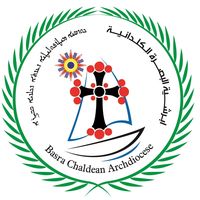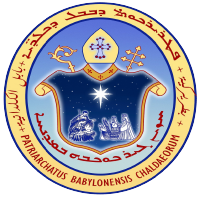Traditions of the Chaldean Catholic Church:
Part I
Dr. Joseph Seferta
Every Christian denomination has its own distinctive history, customs and teachings. The Chaldean Church is one of the Eastern Catholic or Uniate churches because it is united with Rome. It is also one of the Syriac-speaking churches that include the Syrian, Assyrian and Maronite churches, plus their offshoots the Malabarese and Malankarese churches of India. Doctrinally the Chaldean Church is essentially the same as the Church of Rome, but it has kept its own ancient liturgies, sacraments, feasts and fasts, spirituality and monastic life, popular devotions, canon law and, of course, the patriarchal system. Rome has generally respected the distinctive features of the Churches of the East (following the principle of “unity, not uniformity”), except for the occasional attempts of control and Latinisation. Let us take a brief look at the main traditions that are distinctive of the Chaldean Church.
The Patriarchal System:
Every Eastern Church, whether Orthodox or Catholic, is headed by a patriarch who is elected by his own synod of bishops. This is a very old tradition that has always been guarded jealously in the East. After a Catholic patriarch is elected, confirmation is sought from the Roman Pontiff who then confers the pallium upon the newly elected patriarch, thus reinforcing the unity between their two churches. A patriarch is sometimes described as a “mini-pope” for his jurisdiction extends to wherever his flock is found around the world. He consecrates the chrism for his whole patriarchate and ordains and installs all his bishops.
However, Catholic patriarchs are also regulated and supervised by the Sacred Congregation for the Oriental Churches in Rome, which also helps sort out any problems arising within or between these Eastern communities. An Eastern form of Canon Law was put together over several decades and promulgated by Pope John-Paul II in 1990. The majority of the canons resemble the Roman codes, but they incorporate particular features in the areas of hierarchy and administration. Like their Orthodox counterparts, Uniate churches are allowed to have married priests as well, although bishops and patriarchs must be celibate, and, in the Orthodox tradition, they are usually, though not always, recruited from among the monks.
Liturgy and Sacraments:
As in other Christian denominations, the Divine Liturgy is the central act of worship in the Chaldean Church. The principal liturgy is that of “the Apostles Mar Addai and Mar Mari” which is considered by many scholars to be the oldest liturgy in the universal church, for it contains primitive elements borrowed from the Jewish Temple worship in Jerusalem. As in all other liturgies—whether Eastern or Western—the Chaldean liturgy consists of four main parts: readings from the Bible, the offertory, the canon and the communion. But there are distinctive elements also, for example: a) the “penitential rite” falls just before communion, b) the “sign of peace” is given before the start of the canon, and c) the “epiclesis” (invocation of the Holy Spirit) is pronounced after the words of the Last Supper, in the belief that it is at this point that the consecration is complete.
All Chaldean melodies are simple, emotional and beautiful, many dating back to the 7th century. Psalms are used in the Divine Office, along with hymns and poems composed by such saints as Ephrem and Narsai. As for the liturgical cycle, it is based on our “economy of salvation” and is divided into periods of unequal length, which are: Advent, Christmas, Epiphany, Lent, Easter, the Apostles, Summer, Elijah, Moses and the Dedication of the Temple.
Like the Divine Liturgy, the Divine Office also has its roots in the Jerusalem Temple worship and is called hudhra or “hours”. On ordinary days, it consists of only three hours: ramsha (vespers), lilya (night office) and sapra (matins). On Sundays extra psalms are added at midnight and special prayers are recited during times of fasting and feasting, many of which go back to St. Ephrem. The “little hours” were borrowed by the Chaldean monks from their Maronite brethren in Lebanon.
The Sacraments are called “mysteries” in the East, and the Chaldeans—like other Easterners—did not originally distinguish between Sacraments and Sacramentals (e.g., the distribution of ashes). But, due to the Latin influence, we now have the same seven sacraments as in the Western Catholic Church. But all the sacraments, as well as the divine office, are modelled in the Chaldean Church on the Eucharistic liturgy, with corresponding prayers, chants, litanies and Scripture readings.
In line with Eastern tradition, Baptism and Confirmation are administered together to an infant by the same priest. Baptism is by immersion and the rite is quite long. Penance and Holy Communion, however, are practically identical with Western custom, as is the rite of anointing. Although communion in both kinds for all is envisaged in the liturgical books, in practice only the consecrated bread is given. Leavened bread is used in all Eastern churches.
Chaldeans have five holy orders: reader, sub-deacon, deacon, priest and bishop. They are all conferred by the laying on of hands, accompanied by special formulas and putting on the appropriate vestments. As for the sacrament of Matrimony, it is called burrakha (or “the blessing”). It is an ancient and long ceremony, which includes the usual Eastern crowning of the couple, and can take place either in church or the bride’s home.
Feasts and Fasts:
In spite of his troubles with Pius IX, it was Patriarch Yusuf Audo who adopted the Gregorian calendar, replacing the Julian one, and hence it begins with Advent. There are only about 60 feasts, however, half of which are fixed and the other half movable. Some of the feasts are collective ones, such as the “Four Evangelists”, the “Syrian Fathers” and the “Greek Fathers”, while several others (Corpus Christi, the Sacred Heart and St. Joseph) have been borrowed from the West.
Easter is popularly known as “the Great Feast” while Christmas is “the Little Feast”, which, of course, makes liturgical sense. Nevertheless, the major feasts in the Chaldean calendar are: Christmas, Epiphany, Palm Sunday and Easter Sunday. In the villages, traditional processions are staged, accompanied by drama, songs and visits to relatives and friends to exchange festive greetings and presents. On the feast of the Exaltation of the Cross, traditional bonfires are lit, along with fireworks and candle lights in the homes.
Fasting usually precedes every feast, and some of the fasting used to be quite strict. Gradually, however, fasting has been reduced from many days to just the day before the feast. But many Chaldeans still keep the traditional Lenten fast of 50 days, abstaining daily from meat and fats, as well as not eating anything till noon. Many also abstain every Wednesday and Friday, except from Christmas to Epiphany and in paschal time. The Feast of the Ninevites (Ba’utha) is peculiar to all Syriac-speaking churches. It commemorates the Old Testament story of God sending Jonah to Nineveh (near Mosul) in Mesopotamia to warn the people and their king of God’s wrath if they did not repent. It lasts for three days and the whole of the Psalter is recited in church every day.
to be followed



